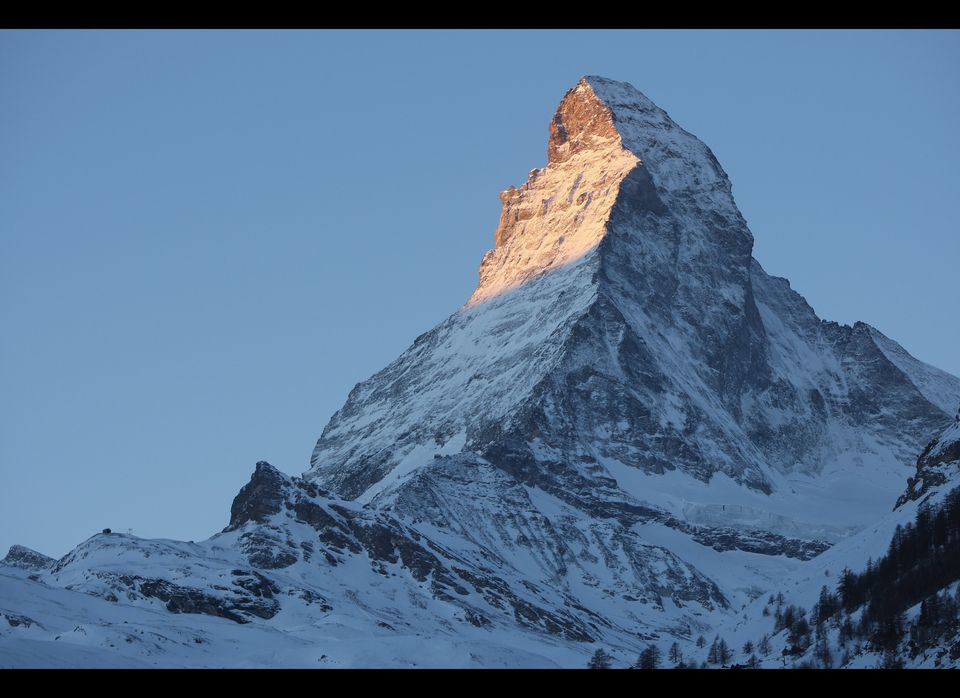Switzerland's Zermatt is small but thanks to the Matterhorn it's become a world-famous climbers' and hikers' town. While Zermatt is filled with supermarkets and deluxe hotels, a few steps beyond the ever-growing village's borders the hiker will no longer be able to benefit from all the downtown comforts and amenities.
It gets steep in a hurry, and that doesn't change until you reach one of the numerous alpine huts, great plateaus or -- for the most ambitious ones -- one of the more than 30 peaks around Zermatt that reach to 13,000 feet. It's by definition an Alpine place, and for the DSLR filmmaker, it's a tremendous challenge to get around with full equipment but without helicopters or best boys. That's where our little story about the making of "Little Zermatt" begins.
In late summer, we visited the region for the third time. This time it wasn't about glacier hiking, paragliding, "roads of iron" or summer skiing -- to mention but a few of the great pleasures Zermatt has to offer in high season from June to September. For us, the visit was about tininess: We had tilt-shift on our minds, since for some time now the world of film makers -- and of spectators -- has been overwhelmed with toy-land perspectives of New York, Shanghai and other exciting and big places.
So why not seek a similar perspective of a place which seems to be tiny in and of itself, given the high mountain scenery surrounding it?
In search of perspective
For this reason we found ourselves hiking uphill, mainly in the very early morning or in the late afternoon because of the great light. (Hiking at those times also meant spending quite some time wandering in the dark with headlamps.) But it's worth the effort: At these hours, paths and plateaus are quite empty -- and the lack of crowds helps as you're finding the right spot.
Cars and people, as well as trains, cable car cabins or helicopters flying in on the other side of the valley have to be caught at the right distance and proper angle if you want to get the right effect, not too far away and not too close, not too steep and not too flat. Finding the right vantage point also demands fearlessness when facing steep cliffs, quickly changing weather or flocks of sheep and goats that are more interested in filming equipment than you might assume.
In the end, it was another exiting experience of shooting mountain scenery, always an uncertain proposition. Natural light needs to be right, even if it often isn't. Equipment should be lightweight but sturdy -- don't even think of using a flimsy tripod, which can't stand a light summer breeze without trembling and shivering. And of course you need to be in shape to get to your shooting locations.
- The Hörnli trail to the Hörnli hut is the famous starting point for Matterhorn peak aspirants.
- The Glacier Trail beneath the east face of the Matterhorn, where we watched the moon beautifully disappear behind Lion Ridge before we witnessed a mountain evacuation with Air Zermatt helicopters.
- A plateau called Höbalmen where you feel like protagonists on a Matterhorn postcard.
- A small bunch of very nice historic buildings called Herbriggen.
- The terrace of the mountain pension "Edelweiss," where you get a very nice view, the best potato rösti and fresh salad grown in the backyard of Swiss host Edgar -- at nearly 6,500 feet.
Back home in the editing room, there's the moment of truth. And once the project is cut and edited, you don't think of filmmaking for a moment. Rather, thoughts turn to travel: I want to be back there, floating and feeling tiny in the mountains.
That's another reason for using tilt-shift to capture a mountain village: A filmmaker's first shot in the mountains is often up, to showcase the giant faces and glaciers. We liked to add the contrary view because a hiker can feel quite small, sitting on a high plateau in late summer, facing the Matterhorn and realizing it's a long way up. It's a feeling caught between the freedom to be floating in solitude and the desire to be safe and grounded among other people, who seem, at the moment, to be tiny figures seen through a zoom lens.
